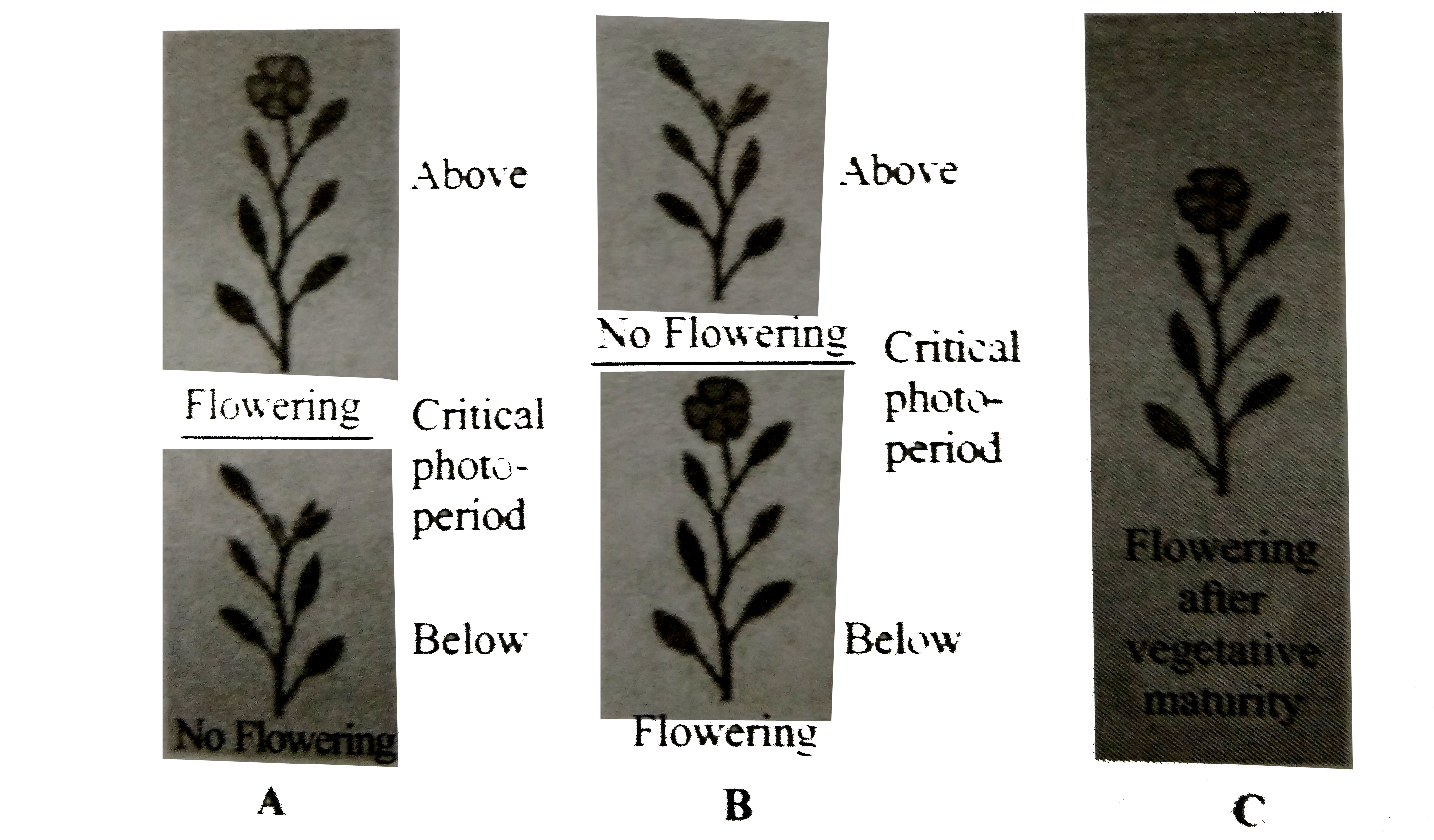Flowering response to length of day and night in plants is called
Photoropism
Photorespiration
Photoperiodism
Photo-oxidation.
The correct Answer is:C
Step-by-Step Solution:
1. Understanding the Question: The question asks about the flowering response of plants to the length of day and night. This indicates that we are looking for a term that describes how plants react to varying light conditions in relation to their flowering.
2. Analyzing the Options:
- Phototropism: This term refers to the growth or movement of plants towards light. It does not relate to flowering responses, so this option is incorrect.
- Photorespiration: This process occurs when plants take in oxygen and release carbon dioxide in the presence of light, which is the opposite of photosynthesis. This is also unrelated to flowering, making this option incorrect.
- Photoperiodism: This is the phenomenon where a plant's physiological processes, such as flowering, are influenced by the duration of light and darkness it experiences. This option is relevant to the question.
- Photooxidation: This term generally refers to the process where light causes oxidation reactions in plants, which is not related to flowering responses. Thus, this option is incorrect.
3. Identifying the Correct Answer: Since photoperiodism directly relates to how plants respond to the length of day and night for flowering, it is the correct answer.
4. Conclusion: The flowering response to the length of day and night in plants is called photoperiodism.
---
- Phototropism: This term refers to the growth or movement of plants towards light. It does not relate to flowering responses, so this option is incorrect.
- Photorespiration: This process occurs when plants take in oxygen and release carbon dioxide in the presence of light, which is the opposite of photosynthesis. This is also unrelated to flowering, making this option incorrect.
- Photoperiodism: This is the phenomenon where a plant's physiological processes, such as flowering, are influenced by the duration of light and darkness it experiences. This option is relevant to the question.
- Photooxidation: This term generally refers to the process where light causes oxidation reactions in plants, which is not related to flowering responses. Thus, this option is incorrect.
Topper's Solved these Questions
- Plant Growth and MovementsBOOK - DINESH PUBLICATION ENGLISHCHAPTER - Plant Growth and MovementsEXERCISE - CYG
20 Videos
- Plant Growth and MovementsBOOK - DINESH PUBLICATION ENGLISHCHAPTER - Plant Growth and MovementsEXERCISE - BRAIN TEASERS-IV
41 Videos
- Plant Growth and MovementsBOOK - DINESH PUBLICATION ENGLISHCHAPTER - Plant Growth and MovementsEXERCISE - BRAIN TEASERS-IV
41 Videos
- PLANT BREEDING AND DISEASE CONTROLBOOK - DINESH PUBLICATION ENGLISHCHAPTER - PLANT BREEDING AND DISEASE CONTROLEXERCISE - Check your Grasp
10 Videos
- PLATYHELMINTHES-THE FLAT WORMSBOOK - DINESH PUBLICATION ENGLISHCHAPTER - PLATYHELMINTHES-THE FLAT WORMSEXERCISE - check your grasp
9 Videos
Similar Questions
Knowledge Check
Removal of apical ( terminal) bud of a flowering plant ( or prunning of a flowering plant ) leads to
Aformation of new apical budsBformation of adventitious roots the cut sideCearly flowering ( or stopping floral growth )Dpromotion of lateral branches
When stomata open only at night they are called
View SolutionFlowering in short day plants is induced by
View SolutionThe movement of plant organs in response to force of gravity is called
View SolutionThe given figure shows flowering responses of three plants A,B and C to the photoperiod. Select the correct option regarding this.

View SolutionTransfer of pollen anther to stigma of another flower of same plant is called______
View SolutionThe inhibitory effect of red light on flowering during critical dark period in short day plants can be overcome by
View SolutionIf an agronomist is trying to induce flowering in a short- day plant and unknowingly it gets exposed to light for some amount of time. What will be the consequence of this plant ?
View Solution
